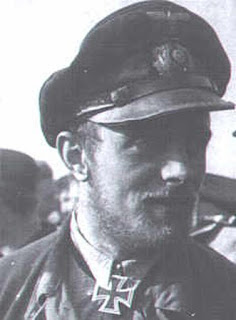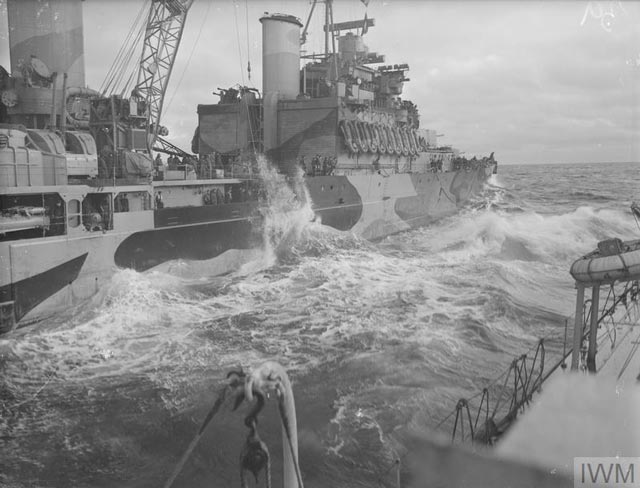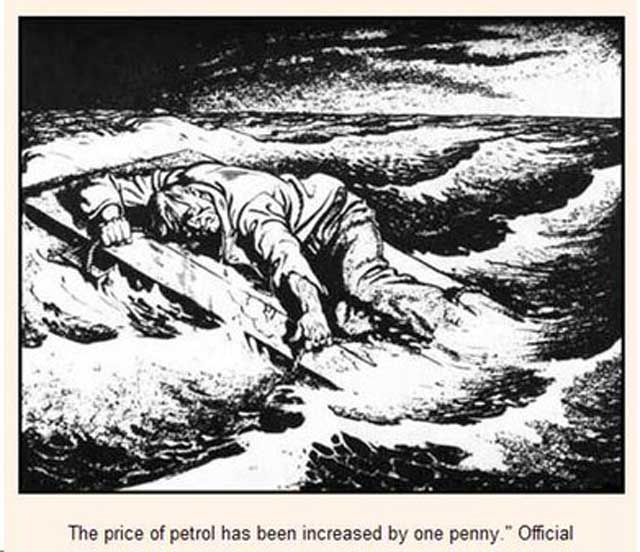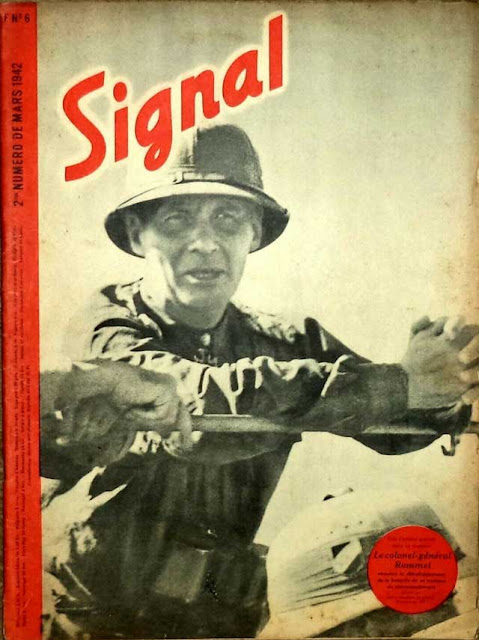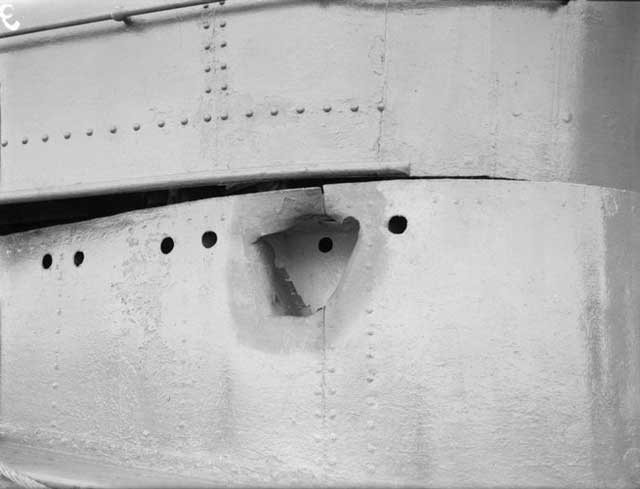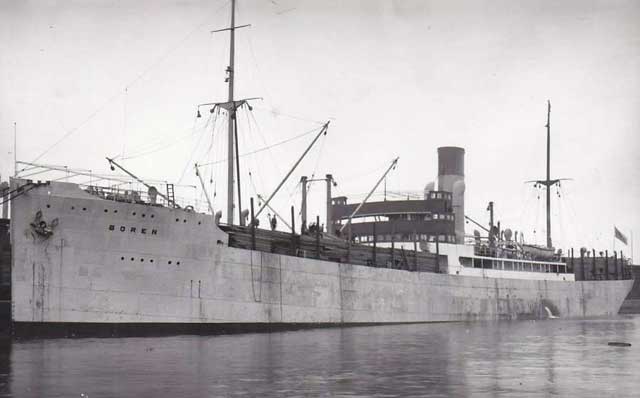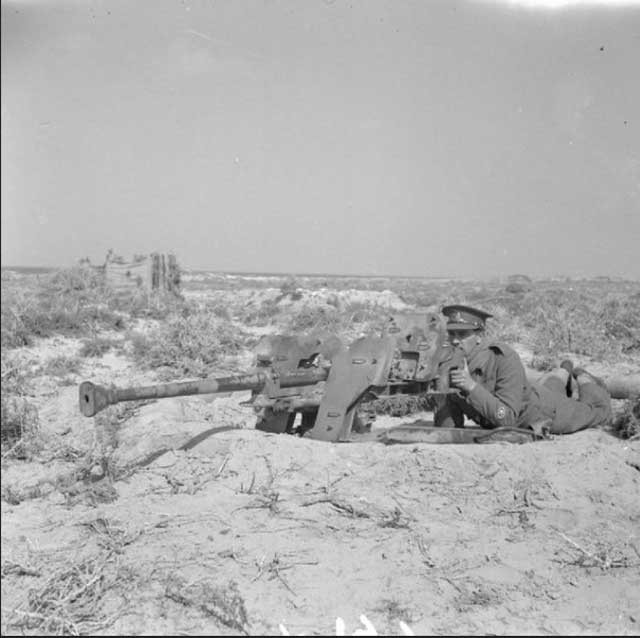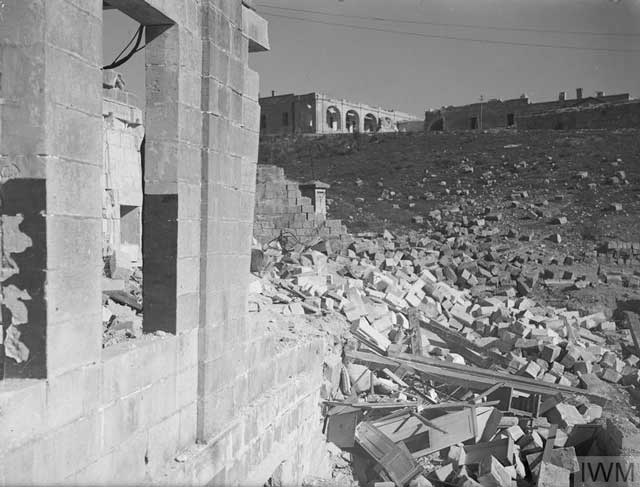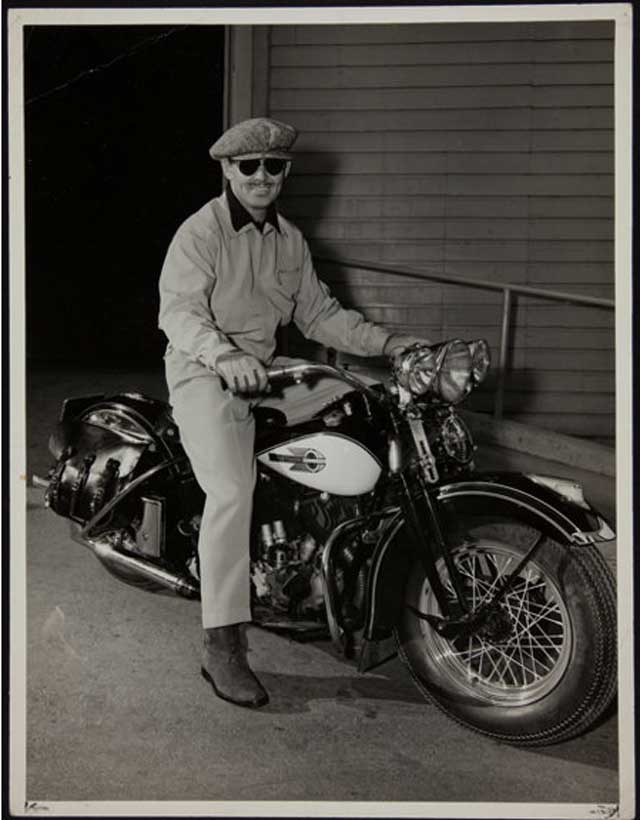Friday 27 March 1942
 |
| U-123, the victor of the Action of 27 March 1942, in port at Lorient (Lockpick, Federal Archives, Figure 101II-MW-3983-23). |
Eastern Front: The Battle of Suursaari begins in earnest at 04:00 on 27 March 1942 when Finnish artillery opens fire on Soviet positions on Gogland. The Finns are able to attack across the ice between the mainland and the island, making for an unusual battle where the Soviets essentially are defending the island against a land attack. The Soviets block one entry point to Gogland but the Finns successfully enter via another route. Two Finnish battalions secure much of Gogland by nightfall, with some Soviet holdouts fleeing across the ice around midnight. There remain isolated pockets of Soviet troops that fight ferociously for two more days. Fierce air battles rage over the island throughout the battle, with Finnish Air Force Fokker D.XXI, Curtiss P-36 Hawk, and Brewster F2A Buffalo fighters reporting kills of a total of 27 Soviet Polikarpov I-153 and Polikarpov I-16 fighters.
Battle of the Pacific: US submarine USS Gudgeon (SS-211) torpedoes and sinks 6526-ton Japanese freighter Nissho Maru southeast of Kumun Island. The ship is later salvaged after the war and re-enters service.
Japanese 7952-ton ocean liner Kitano Maru hits a Japanese mine and sinks off Mabilao, Lingayen Gulf, Philippines. There are three dead soldiers among the 650 being transported.
Dutch planes based in Australia sink 4109-ton Japanese collier Ubari Maru off Koepang, Timor.
European Air Operations: During the day, the RAF sends a dozen Boston bombers to attack the Ostend power station. However, the bombs are all dropped in fields short of the target. After two nights of attacks on Essen, RAF Bomber Command switches to St. Nazaire. It sends 35 Whitleys and 27 Wellington bombers to support Operation Chariot, the Commando raid on the dry-dock gates in the port. Due to poor weather conditions, only four bombers bomb the port, while six drop bombs on other targets. The RAF loses one Whitley. Secondary operations are 8 Blenheims sent to Holland (Schipol and Soesterburg) and 15 Hampdens laying mines (13 successfully) off the northwest German coast. The RAF loses one Blenheim and three Hampdens on these missions.
Japanese 7952-ton ocean liner Kitano Maru hits a Japanese mine and sinks off Mabilao, Lingayen Gulf, Philippines. There are three dead soldiers among the 650 being transported.
Dutch planes based in Australia sink 4109-ton Japanese collier Ubari Maru off Koepang, Timor.
 |
| The Marion Star, 27 March 1942, headlines the RAF attacks on Essen of the previous two nights. The attacks were the first major efforts in weeks but accomplished little. |
European Air Operations: During the day, the RAF sends a dozen Boston bombers to attack the Ostend power station. However, the bombs are all dropped in fields short of the target. After two nights of attacks on Essen, RAF Bomber Command switches to St. Nazaire. It sends 35 Whitleys and 27 Wellington bombers to support Operation Chariot, the Commando raid on the dry-dock gates in the port. Due to poor weather conditions, only four bombers bomb the port, while six drop bombs on other targets. The RAF loses one Whitley. Secondary operations are 8 Blenheims sent to Holland (Schipol and Soesterburg) and 15 Hampdens laying mines (13 successfully) off the northwest German coast. The RAF loses one Blenheim and three Hampdens on these missions.
The Luftwaffe sinks 496-ton British collier Staghound off Torquay. The Staghound later is salved for use as a practice bombing target and eventually is sunk again off St. Thomas' Head while being used for that purpose.
German 482-ton coastal vessel Sperrbrecher 147 Koert (requisitioned Dutch vessel Raket) hits a mine and sinks after an explosion off the Dutch coast.
 |
| USS Antik, sunk on 27 March 1942. |
Battle of the Atlantic: The Action of 27 March 1942 is fought. While patrolling 300 miles off the coast of Norfolk, Virginia, 6610-ton Q-ship USS Atik is torpedoed by U-123 (Kapitänleutnant Reinhard Hardegen). U-123, on its eighth patrol out of Lorient, is in the midst of the most successful U-boat war patrols as part of Operation Paukenschlag. The Q-ship is damaged but does not sink immediately, so this begins an unusual surface action between U-123 and the Atik in which the US ship uses all of its many weapons against the surfaced U-boat. Captain Hardegan responds to the US salvos, which only slightly damage the U-boat's bridge, with his own deck gun. The Americans finally abandon ship after U-123 submerges and pumps another torpedo into the ship.
Hardegan then surfaces again and watches the ship explode, killing all 141 US sailors at the cost of one German midshipman killed. All that is found of the Atik is some wreckage and five empty lifeboats. This is another example of a lesson the Royal Navy learned long ago, that Q-ships simply become targets themselves.
The Allies "get one back" when British warships spot U-587 (Kptlt. Ulrich Borcherdt), on its second war patrol out of St. Nazaire. Royal Navy vessels HMS Grove, Aldenham, Volunteer, and Leamington (formerly USS Twiggs) are covering Convoy WS-17 when they use depth charges to sink U-587 a few hundred miles southwest of Ireland. There are no survivors. U-587 ends its patrol and career having sunk five ships of 23,389 tons.
The Allies "get one back" when British warships spot U-587 (Kptlt. Ulrich Borcherdt), on its second war patrol out of St. Nazaire. Royal Navy vessels HMS Grove, Aldenham, Volunteer, and Leamington (formerly USS Twiggs) are covering Convoy WS-17 when they use depth charges to sink U-587 a few hundred miles southwest of Ireland. There are no survivors. U-587 ends its patrol and career having sunk five ships of 23,389 tons.
U-105 (Korvettenkapitän Heinrich Schuch), on its sixth patrol out of Lorient, torpedoes and sinks 7616-ton Norwegian tanker Svenør about 300 miles east of Cape Hatteras. Captain Schuch surfaces and uses his deck gun to fire 76 round when the tanker does not sink right away. There are eight dead and 29 survivors. As Schuch sails away, he spots another ship, the Portuguese (neutral) freighter Cunene. He stops the Portuguese ship and directs it to the location of the Svenør's lifeboats, where the survivors are picked up and taken to Philadelphia on 31 March.
U-160 (Kptlt. Georg Lassen), on its first patrol out of Helgoland, torpedoes and sinks 6210-ton Panamanian-flagged SS Equipoise about 60 miles southeast of Cape Henry, Virginia. There are 13 survivors and 41 deaths. All 8 Americans on board perish. This is the first of 26 victories for U-160.
Rough weather in the North Atlantic is no joke, and the danger to all is proven once again. Rear Admiral John W. Wilcox, Jr., is the commander of a task force heading toward the Arctic Convoy routes aboard battleship USS Washington when disaster strikes. He falls or is swept overboard off Sable Island and spotted face down about 80 minutes later. His body is never recovered, and an SB2U-2 Vindicator crashes during the search, killing its two-man crew. A board of inquiry is convened the same day. Since nobody saw him fall overboard, rumors spread that the death was not entirely accidental. Nothing untoward is ever proven, and the death is ruled accidental. Wilcox becomes the first US admiral lost at sea. There is a cenotaph to Admiral Wilcox located at Memory Hill Cemetery in Milledgeville, Georgia.
The rough weather also claims 63-ton Canadian sailing vessel Tatagamouche off Nova Scotia.
 |
| A Japanese farmer transplanting tomatoes near Centerville, California, 27 March 1942 (Online Archives of California). |
Battle of the Mediterranean: Fierce Axis air attacks on Malta continue. They finish off British 9776-ton ocean liner MV Breconshire, which was damaged during the Second Battle of Sirte and never repaired while anchored at Marsaxlokk.
Italian 2606-ton freighter Oreste hits a mine and sinks about 13 nautical miles off Cape Platamone (south of Cattaro/Kotor) in Montenegro.
Special Operations: The Royal Navy and Commando forces en route to St. Nazaire for Operation Chariot come upon two French fishing trawlers (La Slack and Nungesser et Coli). So as not to give away the operation's secrecy, the Royal Navy evacuates the crews and sinks the two trawlers. The crews of these ships are pro-Allies and eventually join the Free French.
Italian 2606-ton freighter Oreste hits a mine and sinks about 13 nautical miles off Cape Platamone (south of Cattaro/Kotor) in Montenegro.
Special Operations: The Royal Navy and Commando forces en route to St. Nazaire for Operation Chariot come upon two French fishing trawlers (La Slack and Nungesser et Coli). So as not to give away the operation's secrecy, the Royal Navy evacuates the crews and sinks the two trawlers. The crews of these ships are pro-Allies and eventually join the Free French.
 |
| HMS Thunderbolt as seen from Submarine Depot Ship HMS Forth in Holy Loch, 27 March 1942 (© IWM A 8454). |
The attack convoy heads in toward the target, with the Germans presumably distracted from its approach by a major RAF raid on the port. The Commando attack is planned for early on 28th March.
US Military: The US Army War Plans Division is busy mapping out future operations. Today, it issues "Plan for Operations in Northwest Europe," which provides for a limited cross-Channel operation in the summer of 1942 (Operation Sledgehammer). If Sledgehammer is not conducted, then a larger cross-Channel invasion is planned for early 1943 (Operation Roundup). The buildup of supplies for an eventual invasion is given the codename Operation Bolero.
US Military: The US Army War Plans Division is busy mapping out future operations. Today, it issues "Plan for Operations in Northwest Europe," which provides for a limited cross-Channel operation in the summer of 1942 (Operation Sledgehammer). If Sledgehammer is not conducted, then a larger cross-Channel invasion is planned for early 1943 (Operation Roundup). The buildup of supplies for an eventual invasion is given the codename Operation Bolero.
A mysterious group of B-25 bombers is at Sacramento (California) Air Depot undergoing a flurry of modifications and training flights. Their special equipment has not been tested and many items such as practice bombs have to be tracked down on short notice from supply officers who have no idea that there is any urgency. In fact, there is tremendous urgency because these are the bombers preparing for the Doolittle Raid on Tokyo that is due to begin shortly.
Holocaust: The Germans begin the first of more than 65,000 deportations from Drancy, France, to Auschwitz and other concentration camps.
Australian Homefront: A state of emergency is declared in the northern territories.
Holocaust: The Germans begin the first of more than 65,000 deportations from Drancy, France, to Auschwitz and other concentration camps.
Australian Homefront: A state of emergency is declared in the northern territories.
 |
| Louis vs. Simon II, 27 March 1942. |
American Homefront: Heavyweight Champion Joe Louis technically knocks out Abe Simon in the sixth round at Madison Square Garden. This is Louis' first fight for the US Army and he receives no purse, as all proceeds go to the Army Relief Fund. Simon loses for the second time to Louis and later develops a successful acting career that includes roles in "On the Waterfront" and "Requiem for a Heavyweight." Simon passes away on 24 October 1969.
Future History: Michael Hugh Johnson is born in Fulmer, Buckinghamshire, England. After graduating from Oxford, embarks on a career in acting and changes his name. As Michael York, he first acts on stage and has his first film role as Lucentio in "The Taming of the Shrew" (1967). He goes on to a legendary career in the cinema that includes starring roles in "Romeo and Juliet" (1968), "Cabaret" (1972), and "Logan's Run" (1976), and the Austin Powers film (1997-2002), among many others. Michael York apparently is retired as of this writing in 2020.
Future History: Michael Hugh Johnson is born in Fulmer, Buckinghamshire, England. After graduating from Oxford, embarks on a career in acting and changes his name. As Michael York, he first acts on stage and has his first film role as Lucentio in "The Taming of the Shrew" (1967). He goes on to a legendary career in the cinema that includes starring roles in "Romeo and Juliet" (1968), "Cabaret" (1972), and "Logan's Run" (1976), and the Austin Powers film (1997-2002), among many others. Michael York apparently is retired as of this writing in 2020.
 |
| Detroit Jewish News has its first issue on 27 March 1942. |
March 1942
March 1, 1942: Second Battle of Java Sea
March 2, 1942: Huge Allied Shipping Losses at Java
March 3, 1942: Japan Raids Western Australia
March 4, 1942: Second Raid On Hawaii
March 5, 1942: Japan Takes Batavia
March 6, 1942: Churchill Assaults Free Speech
March 7, 1942: British Defeat in Burma
March 8, 1942: Rangoon Falls to Japan
March 9, 1942: Japanese Conquest of Dutch East Indies
March 10, 1942:US Navy attacks Japanese Landings at Lae
March 11, 1942: Warren Buffett's First Stock Trade
March 12, 1942: Japan Takes Java
March 13, 1942: Soviets Attack In Crimea Again
March 14, 1942: The US Leans Toward Europe
March 15, 1942: Operation Raubtier Begins
March 16, 1942: General MacArthur Gets His Ride
March 17, 1942: MacArthur Arrives in Australia
March 18, 1942: Japan Attacks In Burma
March 19, 1942: Soviets Encircled on the Volkhov
March 20, 1942: "I Shall Return," Says MacArthur
March 21, 1942: Germans Attack Toward Demyansk
March 22, 1942: Second Battle of Sirte
March 23, 1942: Hitler's Insecurity Builds
March 24, 1942: Bataan Bombarded
March 25, 1942: Chinese Under Pressure in Burma
March 26, 1942: Win Or Die, Vows MacArthur
March 27, 1942: The Battle of Suusari
March 28, 1942: The St. Nazaire Commando Raid
March 29, 1942: The Free Republic of Nias
March 30, 1942: Japanese-Americans Off Bainbridge Island
March 31, 1942: Japanese Seize Christmas Island
2020






